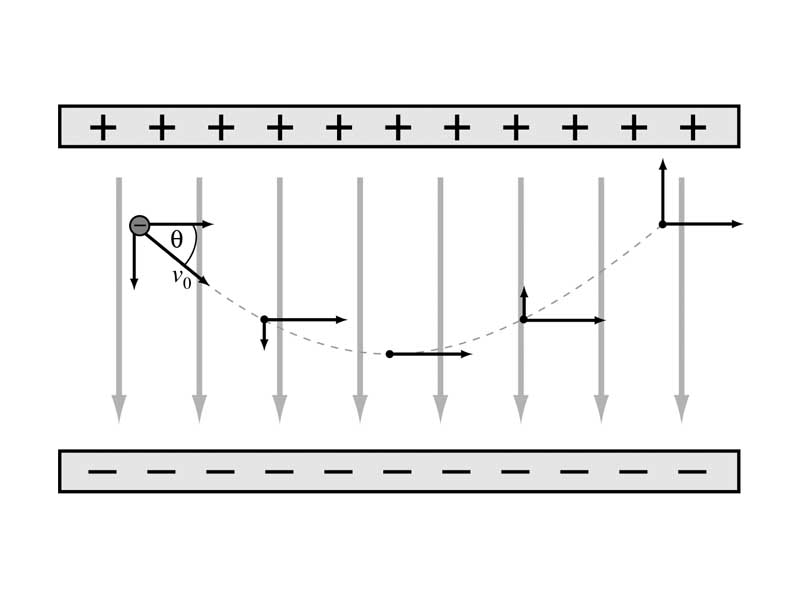Interdisciplinary Note (3 of 20)
The problem solving skills you learn in projectile motion often must be employed on the MCAT in the context of the electrostatic system of a charged particle moving between electrified parallel plates. However, while there are important similarities, there are also important distinctions between problem solving with gravity and problem solving with electrostatics. Both the similarities and the differences are fruitful for the writers of multiple choice MCAT questions. They are interesting.
In projectile motion, an object moves through the uniform gravitational field on or near the surface of the earth (uniform for all intents and purposes). The kinematics of such an object are characterized by constant acceleration determined by the constant gravitational field.
A similar type of problem can be situated between the plates of a capacitor, where there is a uniform electric field. The MCAT loves to pose projectile motion type questions within the context of charged particles between electrified plates.
Between the plates of a capacitor, away from the edges, you have a reasonable approximation of a uniform electric field. The kinematics within this constant force environment are those of uniform acceleration for a particular charged particle, so the motion of a charged particle between capacitor plates can involve similar questions to projectile motion.
However, keep in mind that the force on a charged particle between capacitor plates derives from electrostatic interaction while the force on a projectile derives from gravitational interaction. A gravitational field accelerates different masses with the same acceleration, but an electric field can lead to different accelerations for different particles because a particle may have a lot of charge and a little mass or a little charge and a lot of mass. What produces the force, charge, is different from what resists the force, mass, while with gravity, as gravitational force increases, so does the object's inertia. Additionally, there are two kinds of charge, positive and negative, so in addition to the magnitude of the force, the direction of the force on two different particles may be different.
Launch two projectiles in a uniform gravitational field with the same initial velocity into an environment with no air friction and the path will be the same. Launch two charged particles, though, say an α particle and a β particle, into the space between charged capacitor plates, and, though the acceleration of each will be constant, the acceleration of each will be different from the other.
